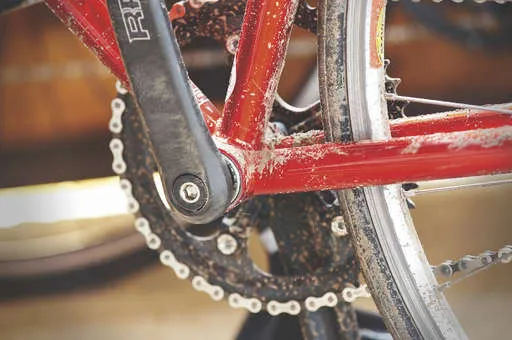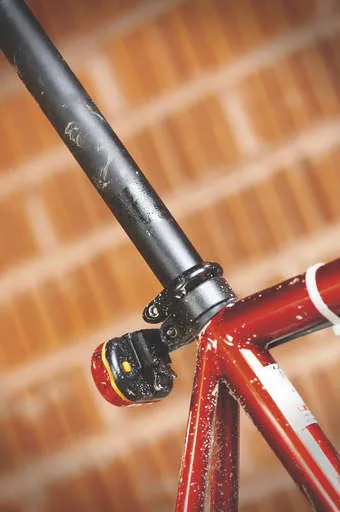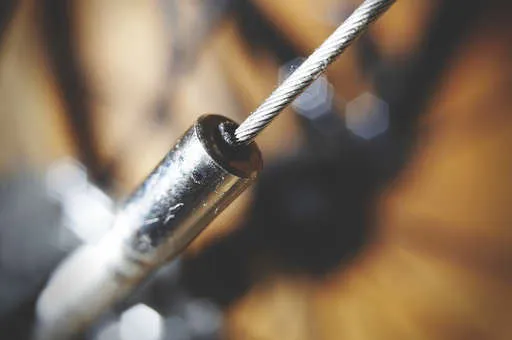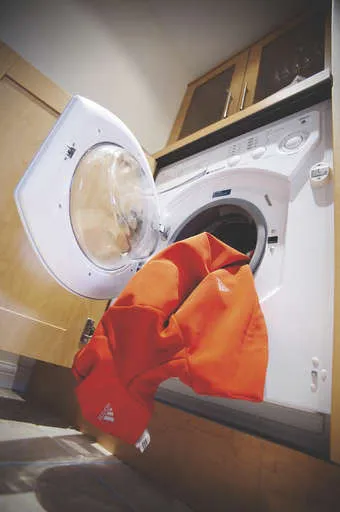Strapped for cash after Christmas? There are loads of easy ways you can save money while riding through the winter…
There are plenty of ways to save money while you keep on riding – from routine cleaning and lubing that’ll prevent expensive repairs, to dressing in layers so you get max wear from clothes that last all year round. So no need to hibernate, keep pedalling through the cold and wet and you’ll feel better for it – and be both fitter and tougher for when the seasons take a turn for the better.
1] Look after your chain

Dry your chain off and re-lube it as soon as you get in after a wet or dirty ride. This gives less time for damage to be done. If the chain is lightly soiled, give it a scrub with a used toothbrush or chain cleaning machine in combination with a light cleaner like Muc-Off. A grimier chain will require a stronger degreaser. Always make sure the degreaser is fully washed away and allow the chain to dry before relubing. Check for wear on a regular basis too; we recommend the Wippermann chain measure tool (available from www.extrauk.co.uk).
2] Don’t fall off
Take it easy in icy conditions or when there’s mud and/or water on the road. It sounds obvious, but we get a lot of letters from people who haven’t. Apart from hurting yourself, coming off will probably damage your bike and kit, and could end up costing you a whole lot of money. Watch out particularly for wet leaves, hidden drain covers and slippery lines of black bitumen which are just waiting to catch out the unwary.
3] Wear overshoes

Overshoes don’t just keep your feet warm and dry, they protect your shoes too. Light overshoes are readily available and although they can look a bit ugly, the benefits are huge.
Endura’s Road Overshoes (www.endura.co.uk) are a favourite, and the £20 price is a small sum to pay for a bit of warmth and added protection for your best riding shoes.
4] Lights
Get rechargeable lights. They can be expensive to buy but you’ll save loads on replacement batteries in the long run.
5] Frame check

Check that your frame tubes haven’t filled with water or they can corrode from inside. This is a common problem on frames with rear facing grooves at the seat clamp where water easily enters the seat tube. Try to check regularly because this isn’t a problem you generally notice until it’s time to remove the bottom bracket, and fail.
6] Layer Up
Wear several thin layers instead of one thick layer to stay warm. This allows you to use the clothes in different combinations year round rather than having a jacket that you only wear in January and February. Thin base layers are extremely versatile. The superfine merino wool varieties, although pricey, are worth the expense because you’ll use them lots; they wick moisture, keep you warm and naturally resist the buildup of odours (cuts down on washing!) – ideal properties for the commute and regular training ride.
7] Brake wear

Check your brake blocks for imbedded stones and flints which will wear your wheel rims quicker. Your brake blocks will wear quicker in winter conditions so make sure they’re correctly aligned to the rim to prevent them from riding up into the tyre.
8] Seatpost seizures

Through the winter, frequently check your seatpost, especially if it’s carbon. We’ve heard many a horror story of expensive carbon seatposts becoming seized in frames. You shouldn’t grease a carbon post but check that it is still free to move. Remove the post and clean away any dirt and grime before inserting again. All other posts should be lightly greased to prevent them from seizing in a frame. Use copper slip on titanium frames and seatposts.
9] Protect your longs
Wear shorts (cheap) outside your bib longs (expensive) so the shorts will need replacing before the bibs.
10] Tape up LED lights
Most LED rear lights are water resistant but a heavy downpour can see some moisture enter the battery compartment. This is difficult to notice because it rarely effects the light until it’s too late and you find moisture has corroded the battery and the internals. Stop water entering the battery compartment by taping over the cover with gaffer tape or something similar.
11] Fixed ideas

Think about commuting on a fixed gear bike and hanging up your best bike for winter (or only using it on finer days). Fixed bikes can be built for little cost and they take very little maintaining. They also get you fit and spinning smoothly.
12] Lube your cables

Keep your cables well-lubed and they’ll last longer. Slotted cable guides make routine cable cleaning easy. For the gear cables, shift into the big chainring and big sprocket then release the cable tension all the way at the shifter, but do not shift into the gear by turning the cranks. This produces enough cable slack to enable the outers to be pulled from the cable stops. Pull back the outer to reveal the inner gear cable and then clean and lightly lube before reinstalling the outer. It’s a similar procedure for the brakes – just push the calliper to the rim to produce enough cable slack and then pull the outer from its stops.
13] Fit mudguards
They keep you dry(er) and also protect your clothes from grime and salty grit. Light mudguards are readily available and even if your frame is missing eyelets you can purchase very good clip-on mudguards that fasten to the seatstays and fork legs.
14] Avoid salty rides
Don’t go out just after the roads have been salted or gritted unless you absolutely have to – that stuff can really corrode your bike. If you can’t avoid it, make sure you clean your bike thoroughly afterwards.
15] Tyre check
Check your tyres for small nicks and splits. You can fix some with a dab of superglue before they develop into big tyre-destroying tears.
16] Wash and reproof

Many waterproof jackets have a DWR (durable water repellent) finish that beads water on the surface of the fabric. This can be rejuvenated with a wash followed by drying in a warm tumble dryer or a warm iron (check the wash instruction). The DWR finish will eventually wear away but can be reapplied by washing with treatments from Grangers or Nikwax (available from outdoor shops and bike shops).
17] Grease your pedals
If your pedals can be dismantled, give them a service to prolong life. In most cases removing the axle, cleaning, and filling the pedal body with grease is the easiest way to get the job done.
18] Hub service
Check for play in your hubs which can indicate worn bearings and races. It’s a good idea to service the hubs at the start and end of the bad weather. Loose ball hubs are easy to service while hubs with cartridge bearings will require the removal and replacement of the whole bearing unit, possibly with specialist tools. Hubs with grease ports enable you to inject fresh grease into the hubs without any disassembly.
19] Headset overhaul
Headsets take the brunt of abuse and, as with hubs, it’s worth giving them an overhaul at the start and end of the winter season. Aheadsets are easy to service and the loose balled variety should be cleaned out and re-greased. Cartridge headsets are a bit harder to service but it is possible to lift the seals to give them a clean and grease, and they tend to be better sealed.
20] Ride more!
Save on fuel costs, parking fees, wear and tear on your car, congestion charges, bus and train fares… Oh, and it’s better for the soul too.